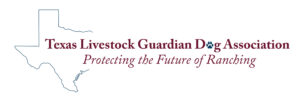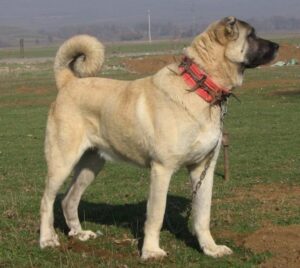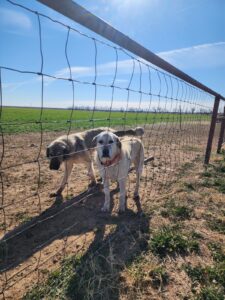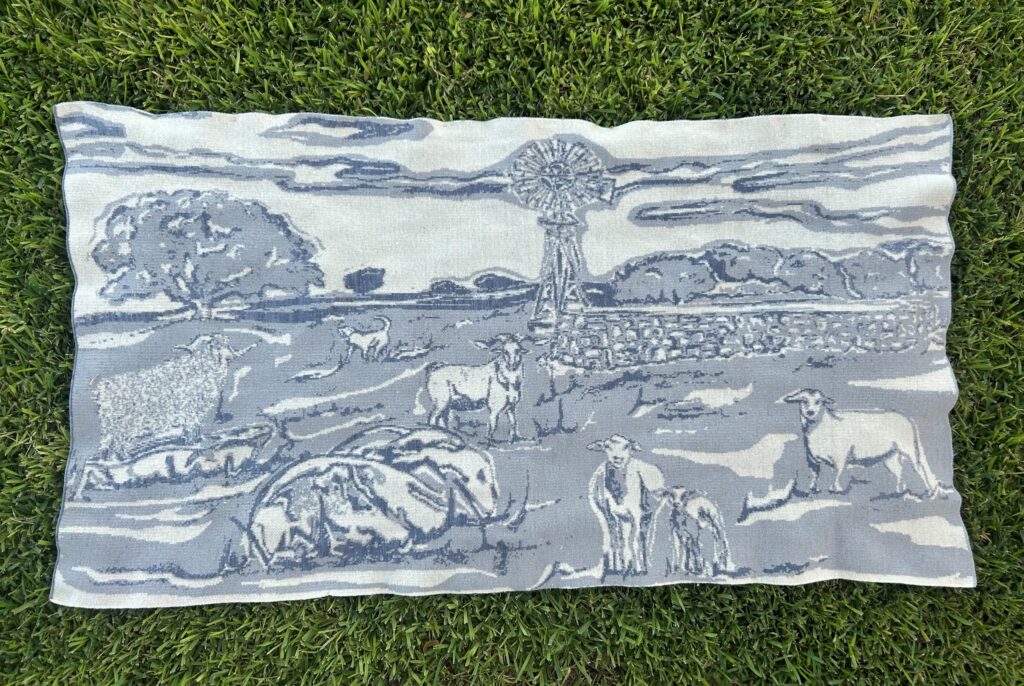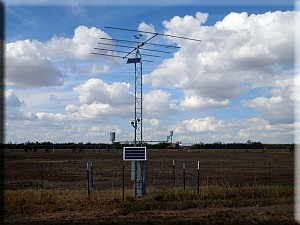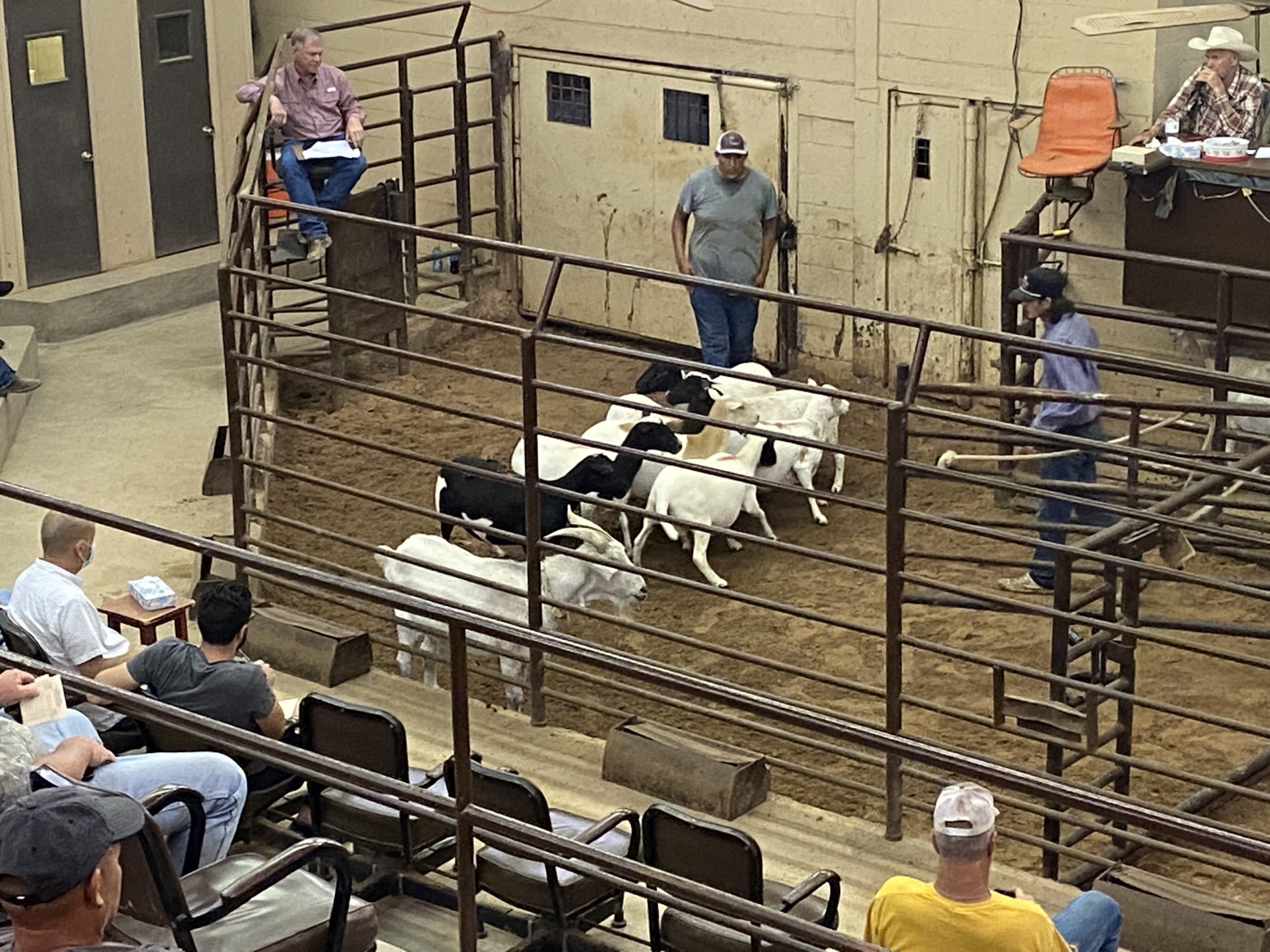According to long-range forecasts, chilly weather will persist through the end of February. Ensure you provide plenty of dry bedding and fresh water for your LGDs. Dogs need fresh water like your livestock, even during cold weather. The dog’s double coat can easily keep them warm in dry, freezing conditions. If their coats become soaked from heavy rain and the weather is incredibly windy and below freezing, dry them thoroughly before allowing them to return to work!
AgriLife Livestock Guardian Dog Program: Update and Events
Our upcoming LGD webinar is scheduled for February 26th at 2 p.m. Tamara Taylor from Turkmen Kangal Dogs, Patteran Akbash, and Dairy Goats will lead a session on the Kangal breed. Mrs. Taylor has been involved with LGDs for over 35 years and has supplied Akbash and Kangal dogs for multiple USDA/APHIS research projects in the Western States. Please check our website and social media pages for more information or to register for the event.
SAVE THE DATE! We will be hosting the annual AgriLife LGD Field Day at the AgriLife Center in San Angelo on May 2nd from 8 a.m. to 4 p.m. The event will feature workshops, a producer panel, and a ranch tour. Vendors and dog breeders will be present. Lunch and morning refreshments will be provided. Follow our social media pages @TAMUlivestockguarddog for more information. Check the events page on our website to register for the event!
Is a Male or Female LGD Better?
This month, we will continue our three-part series on male versus female LGDs. Last month, we examined some common misconceptions producers have regarding the guarding styles of male and female LGDs. This month, we will explore the traits of male and female LGDs. We will conclude our series in March.
Common Male LGD Traits
The larger size of male livestock guardian dogs is their most significant advantage. While both male and female LGD breeds are large dogs, males tend to be slightly taller and heavier overall. Ranchers report that male LGDs possess heightened territorial instincts, which may lead them to conduct more perimeter patrols. They mark their territory with urine during these patrols, deterring other canine predators. However, it’s important to note that females also mark their territory!
Male LGDs do have some drawbacks. They often take longer to mature, requiring more time and commitment to train them as reliable guardians. Aggression towards other dogs can be a concern with intact male LGDs; however, it’s crucial to recognize that some female LGDs can display similar aggressive behaviors. Additionally, intact males can become easily distracted by females in heat, encompassing not just those of their breed but also any nearby female dog. It’s also noteworthy that intact males may show increased aggression towards each other when vying for a female in heat.
Common Female LGD Traits
Ranchers claim that female LGDs tend to stay close to the herd or flock, providing close proximity protection. Producers also state that female LGDs are more nurturing and protective of newborn and young livestock. However, several research studies have shown no significant differences in the guarding abilities of males compared to females, or of fixed versus intact dogs. Additionally, we have not observed any differences in the guarding abilities of dogs in our own research study. We consider the anecdotal information about female LGDs to be inaccurate, based on studies conducted by other researchers as well as our LGD project findings. The primary advantage of having female livestock guardian dogs is that they mature faster. Some also suggest that they are more obedient. If this is true, it would require less training and allow more time for the dogs to serve as reliable guardians.
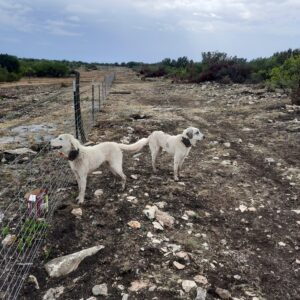
Jan and Betty are a female team on a producer’s ranch near Sonora, TX. AgriLife picture courtesy of Costanzo 2022.
There are downsides to female LGDs as well. The most significant issues arise in unspayed females. Females often become distracted when they are in heat. They may focus more on reproduction than on their duties as LGDs and can become aggressive with other dogs. Their heat cycles can also create problems by attracting outside dogs and potentially distracting male livestock guardian dogs within their pack.
Female LGDs will be less effective if they have a litter of puppies that require their attention. Pregnancy can also be challenging for a female’s body. Dogs with multiple closely spaced pregnancies may wear down more quickly and be replaced sooner than spayed or neutered dogs. While not common, female dogs can interbreed with wolves and coyotes, resulting in large, dangerous feral dogs.
For more information on this topic, be sure to check out our blog next month!
Bonding Project Update
Round Six Dogs
The pups are all doing well on their ranches. Last month, we observed Lilly chasing animals a couple of times. She is at the Center and has been wearing a dangle stick for a few weeks to modify her behavior. If that doesn’t work, we may need to pen her with some mature rams and billies. Producers must remember that training aids are not intended to be permanent solutions to the issue. We have the dogs wear the devices for a month, then remove them to see if the harmful behavior has decreased or stopped. If it has not, the device is reapplied for another 30 days. At that point, we remove it again and observe the dog’s behavior. If the behavior has not stopped, we will reapply the device for 30 days. If, after that, the behavior continues, we will switch to another method to change the dog’s behavior.
Adult LGDs
All adult dogs received their annual vaccinations and heartworm prevention in January. We are now safeguarding dogs against heartworm infection, even with the minimal risk in our area. The spread of heartworm is rising in regions not typically associated with the disease,
largely due to the increased movement of rescue dogs across state lines. These dogs often carry the disease and transmit it to noninfected dogs through mosquito bites. We recommend checking with your local veterinarian for further information.
Waylon and Penny are thriving as Blitzen and Lilly’s canine teachers. Both adult dogs have adapted well to having a teenager in their pastures. Recently, Blitzen was patrolling outside his pastures, so we kenneled him for a few days and started invisible fence training again. Blitzen and Lilly will leave the Center at the end of February or early March to guard the goat herd in Menard.
In closing
If you enjoyed this monthly LGD blog, please remember to subscribe using this link: The Guardian Way | Texas A&M AgriLife Research and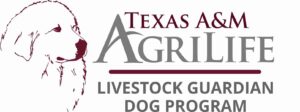 Extension Center at San Angelo.
Extension Center at San Angelo.
If you have any feedback about this article or would like to propose topics for future articles, webinars, or workshops, please contact me at bill.costanzo@ag.tamu.edu or 325-657-7311.
If you’re seeking information on LGDs, visit our website. It features factsheets, global research on LGDs, and case studies we’ve conducted.
The Texas A&M AgriLife Livestock Guardian Dog Program is a collaborative initiative between Texas A&M AgriLife and the Texas Sheep and Goat Predator Management Board. Follow us on our social media platforms and share them with your friends and family!
Facebook, Instagram, YouTube: @TAMUlivestockguarddog
Remember to check out the Texas LGD Association online! You can follow the organization on Facebook or YouTube under @TexasLGDAssociation or visit its website.